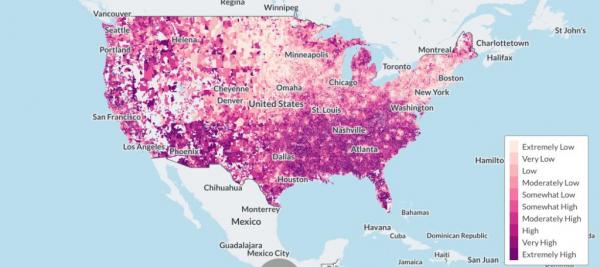
WASHINGTON, Dec. 3 (UPI) — A new interactive student debt map shows those living in low-income communities with low student loan balances are having a harder time repaying their debt than those carrying six-figure student debts and living in wealthier areas.
The Center for American Progress and the Washington Center for Equitable Growth found the way Americans manage their student loan debt differs substantially by zip code.
From the interactive map, researchers found there is an inverse relationship between zip code income and delinquency rates. That is, low-income borrowers are most likely to default on their loan repayments.
For example, some Washington, D.C., and Chicago metro regions that have residents with high median incomes have high average student loan balances but low delinquency rates.
“For the country as a whole, there’s an inverse relationship between zip code income and delinquency rates. As the median income in a zip code increases, the delinquency rate decreases, corroborating findings that low-income borrowers are the most likely to default on their loan repayments,” researchers said.
The center said there are two explanations for the disparity. First, graduate students take out larger student loans but pay them back easily due to higher post-graduation salaries.
Second, undergraduates from for-profit colleges take out relatively smaller loans but have a tougher time with repayments because of a poorer job outlook and overall lower earnings after graduation.
Additionally, the lack of access to credit for poor and minority borrowers also results in delinquency. That’s because those in the lower-income bracket without access to credit may turn to exploitative credit arrangements in the form of high interest rates and other penalties, including for student loans.
“That disadvantage interacts with and is magnified by their lack of labor market opportunities. The result is exactly what we see across time and space: high delinquency rates for those with the least access to credit markets,” said research economist Marshall Steinbaum and research analyst Kavya Vaghul, both from the center for equitable growth.
For the purposes of the map, researchers assigned a 10-point scale ranging from low to astronomical for student loan balances based on a national average student loan balance of $24,271. This information was integrated with Experian credit data and income data from the American Community Survey to produce the interactive map






